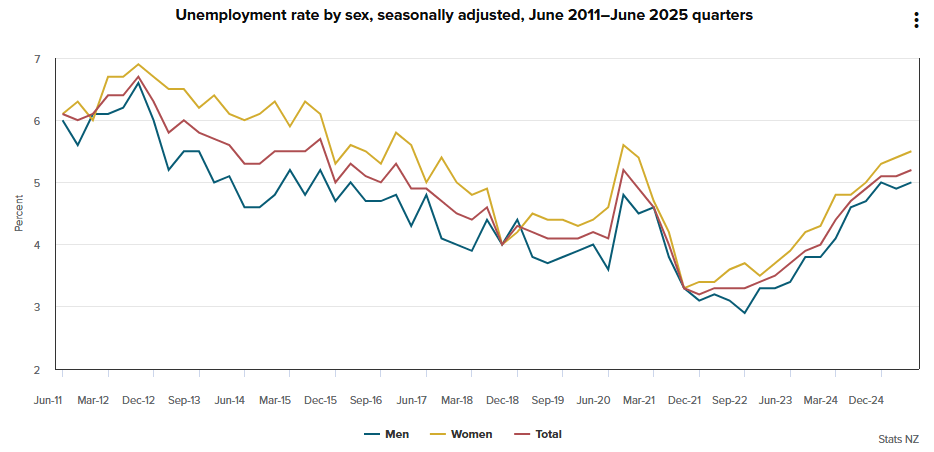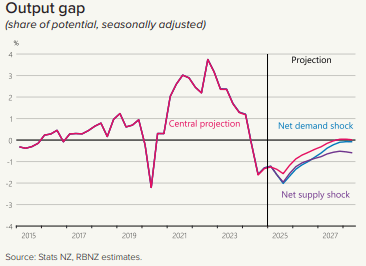MNI RBNZ WATCH: MPC Likely To Cut 25bp To 3%

The Reserve Bank of New Zealand is likely to cut the Official Cash Rate by 25 basis points to 3% next Wednesday, as unemployment rises and economic growth remains sluggish.
A quarter-point move would bring the OCR to its lowest level since September 2022 and take cumulative easing to 250bp over the past 12 months. Next week’s meeting follows July’s decision to hold the cash rate steady, when the Monetary Policy Committee signalled further cuts ahead should medium-term inflation continue to ease in line with forecasts. (See MNI RBNZ WATCH: MPC Holds, Eyes August Cut)
Markets assign a 90% probability to a cut next week and expect the OCR at 2.6% by Q2.
DOMESTIC DATA
June quarter inflation was 2.7% y/y, close to the RBNZ’s 2.6% May forecast, while household and business inflation expectations have remained largely stable. One-year-ahead expectations fell to 2.37% from 2.41% and two-year-ahead to 2.28% from 2.29%, RBNZ data showed earlier in the month. Five-year expectations rose to 2.26% from 2.18%, while the 10-year view held at 2.15%. Respondents on average expect the OCR to fall to 3.02% by end-Q3 2025 and to 2.86% by end-Q2 2026.

While the unemployment rate rose to 5.2% in Q2, in line with the RBNZ’s forecast, employment grew below expectations at just 0.1%. Monthly filled jobs and vacancies data suggest momentum remains weak, indicating the RBNZ may need to revise up its May forecast for the jobless rate to peak at current levels.

The RBNZ’s updated forecasts in the August Monetary Policy Statement, to be released alongside the decision, will also focus attention on its output gap estimates, which it described as “significantly negative” in May. (See chart)

JUMBO EXPECTATIONS
The committee could discuss a 50bp cut next week as unemployment rises and the economy continues to stall, but will likely opt for a quarter-point move, Michael Reddell, independent economic commentator and former RBNZ special adviser, told MNI this week. (See MNI INTERVIEW: RBNZ To Cut 25bp, Eye 50bp Move - Reddell) Weak productivity and a widening output gap are putting downward pressure on core inflation, Reddell said. “That gives me confidence that core inflation really can only head down from here,” he added.